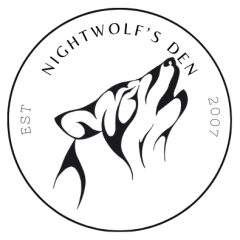A Fresh Start: Intentions for the New Year
With the reflections of 2025 still fresh, 2026 will begin with a deep breath and a renewed sense of purpose. After a year of family health ups and downs, returning to study, and adjusting to new routines, 2026’s focus is all about balance – nurturing what matters most, one gentle goal at a time.
The aim isn’t perfection or pressure. It’s about living with intention, creating sustainable rhythms, and celebrating small wins along the way.
Physical Health: Grounding in Movement and Rest
Health was front and centre last year, and 2026 builds on that awareness. The focus is on gentle, consistent care – walking in nature, mindful movement, and rest that restores.
Key Goals:
- Walk in nature at least three times a week – beaches, bush tracks, or ParkRun.
- Create a gentle morning movement ritual.
- Grow and eat more fresh produce from the garden.
- Stick to a no phone after 9pm rule for better rest and sleep rhythms.

Mental Health: Quiet Reflection & Gentle Progress
After the emotional weight of 2025, mental health takes priority. 2026 invites slow, steady self-awareness through journaling and rest.
Key Goals:
- Keep a weekly self-check-in journal – mood, gratitude, and small wins.
- Take one mental health day each month purely for rest or pleasure.
- Explore sensory tools for autistic wellbeing – weighted blankets, calming soundscapes, and scent rituals.
- Limit online comparison by curating digital spaces mindfully.

Home: Creating Calm and Flow
Home is the heart of everything – a sanctuary that supports both study and creativity. 2026 focuses on steady, practical improvements that make daily life flow with ease.
Key Goals:
- Complete one decluttering or organising project each month.
- Create a cozy or sacred corner with candles, books, and plants.
- Build sustainable home rhythms – daily, weekly, and seasonal routines.
- Grow herbs, flowers, and veggies for a thriving home garden.

Family: Connection at the Core
After K’s big start at Indie School and a year filled with both challenges and milestones, 2026 is about making time to connect. Family adventures, gratitude, and shared creativity will be woven into the year ahead.
Key Goals:
- Have weekly family dinners or game nights – no screens allowed.
- Take at least four day trips or mini-adventures around Tasmania.
- Start a “family gratitude jar” to collect weekly moments of joy.
- Begin a family creative project – photography, a zine, or a memory book.

Personal Development: Growth Through Learning
Returning to study after 20 years in 2025 was a powerful reminder that learning never stops. 2026 continues that momentum, blending curiosity with balance.
Key Goals:
- Read 12 books that inspire creativity and insight.
- Take a short online course or workshop that sparks excitement.
- Practice saying no without guilt to protect energy and boundaries.
- Reflect quarterly on values and priorities, realigning as needed.

Creative Goals: Making from the Heart
Creativity remains a core part of life and expression. Whether it’s through writing, art, photography, or crafting, 2026 is about joy in the process rather than perfection.
Key Goals:
- Dedicate two hours each week purely to making.
- Attend or host a creative workshop with other makers.
- Complete a signature project that reflects personal story and style – it’s launching today and I’m really excitied.

Spiritual Goals: Staying Aligned and Connected
Following the Wheel of the Year and reconnecting with local land and energy will guide 2026’s spiritual path. These rituals offer grounding and reflection throughout the seasons.
Key Goals:
- Celebrate each Sabbat with small, meaningful rituals.
- Deepen connection with local land spirits through gratitude and offerings.
- Build a daily or weekly altar practice tied to moon phases or elemental themes.

Closing Thoughts
2025 taught resilience, gratitude, and the value of slowing down. 2026 carries those lessons forward – with gentle structure, grounded goals, and space for joy. This isn’t a year of hustle; it’s a year of harmony.
Here’s to a balanced and beautiful 2026 – a year of health, creativity, and connection in all its forms.
With love from the Den,
– Nightwolf 🐺








